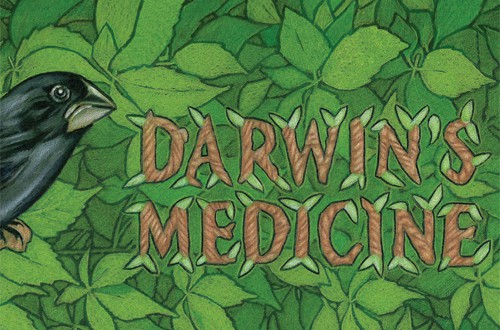
Last year ended with a flurry of acquisition news and Merck’s purchase of Cubist was typical in that it’s aimed at getting hold of some differentiating capabilities – in this case in antibiotic resistance. It looks like a good move but careful consideration of how evolution (both biological and industrial) works suggests that deals of this kind may be necessary but not sufficient. As ever with this column, please indulge my diversion into the theory before I return to the practical points to take away.
You will recall, I’m sure, that one of the big surprises of the human genome project was that about 98% of our DNA is noncoding. Quickly labelled ‘junk’ DNA by the popular press, research has continued into exactly how much of it is useful and what it does. We know that some of it performs the important role of switching coding genes on and off and very important this function is too.
Work looking at the Galapagos finches for example – whose variation famously inspired Darwin – show that their coding genes are very similar indeed. Their beak and other phenotypic variations are caused mostly by those same genes being switched on or off at different times during embryonic development. Junk, in this case, is far from useless and makes all the difference.
There appear to be a set of genes that firms need that aren’t on their acquisition list
In my research into the evolutionary mechanisms of the life science sector, the analogues of genes are organisational routines, which express themselves as capabilities, the analogue of proteins. And we can class capabilities into one of three types. Core capabilities are those that are necessary just to operate in a market – staying legal and compliant, for example. Differentiating capabilities are those that create competitive advantage – the ability to create a compelling health economic value proposition for instance. However both of these very obvious capabilities are equivalent to proteins expressed by coding genes. The organisational analogue of the less obviously useful genetic switch is an organisational routine that leads to the third type: Dynamic capabilities. These enable the organisation to shift or transform its assets or resources. So the capability to create true market insight is a dynamic capability, because it enables resources to be reallocated.
Similarly, the capability to make cross-functional teams work is a dynamic capability that is necessary to switch on many differentiating capabilities, such as key account management. So, to draw out the biological analogy a little further, some routines in a company express themselves visibly via core and differentiating capabilities. Other routines, however, look like junk on the surface but turn out to have vitally important roles in reshaping our assets and resources.
Dumb blondes?
How is this relevant to our industry’s spasms of acquisition and licensing? Well each of those deals is a kind of gene transfer, typically of a set of organisational routines for discovery and development of a new technology (such as in Cubist’s case). Yet there appear to be a set of genes (organisational routines) that firms need that aren’t on their acquisition list. These are those that lead to dynamic capabilities, such as routines for change management, cross-functional working and other less explicit capabilities. Of course, the big firms might have these already but I have to say that’s not my experience. And one wouldn’t expect the relatively stable environments in which big pharma has lived for decades to have favoured routines that enable change. If I can make another, slightly less serious analogy, it is as if big firms are trying to make themselves attractive by acquiring the genes for height, blonde hair, blue eyes and low body fat, while ignoring the genes for intelligence, adaptability and learning ability.
Junk can be valuable
If you’ve followed my perhaps tortuous analogies then the practical implications might seem obvious. Big pharma currently identifies those differentiating capabilities it is short of, such as those in some specialised area of R&D, and goes out to buy them. But the dynamic capabilities idea suggests this isn’t enough. It also needs to consider its capabilities for learning, understanding the market and change management and finding ways of acquiring those routines. And if you think this is an abstract, theoretical issue, just think for a moment. How good is a big pharma company in any given area of R&D? Typically, the answer is pretty good. But how good, in comparison, are big pharma’s capabilities in making change happen across functional boundaries, to take just one example? I think you know the answer to that one. The moral is that, in attempting to adapt to a changing market, it may be necessary to engineer the firm’s coding DNA, but it is also important to pay attention to the junk.





